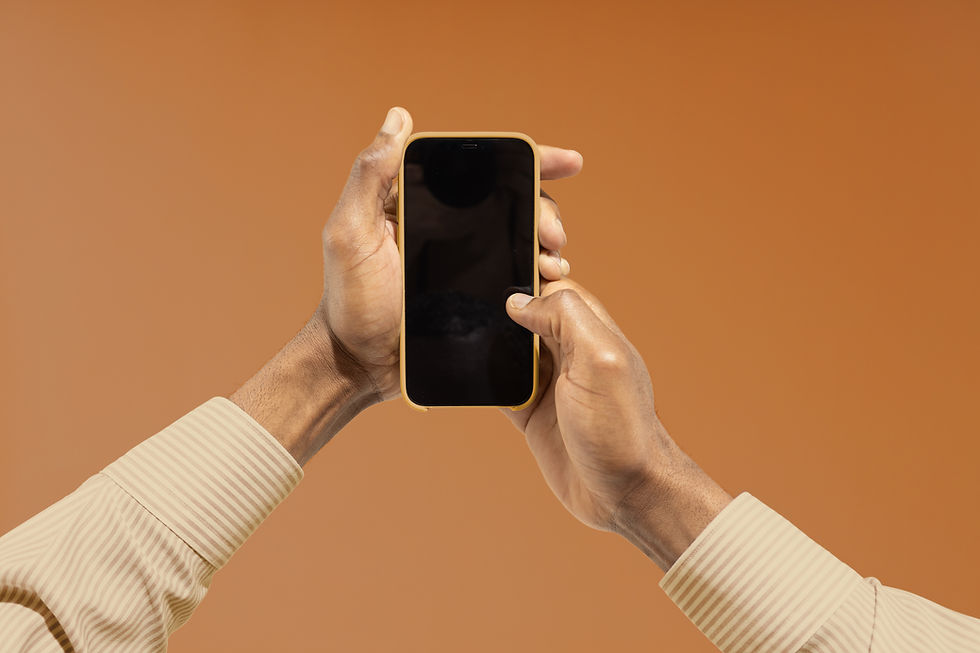Social Media and Cultural Appropriation: Navigating a Digital Landscape
- Catie

- Dec 16, 2023
- 4 min read
So, you've probably heard of the term "cultural appropriation." It's a hot topic, especially when it comes to social media. Platforms like Instagram, TikTok, and Twitter have completely changed the way we connect, share, and get inspired. But the same platforms that celebrate cultural exchange can sometimes perpetuate cultural appropriation. In this blog post, we'll dive into this complex issue and see how these platforms can either promote cultural appreciation through sharing or, on the flip side, make cultural appropriation even worse.
Understanding Cultural Appropriation
Let's start by understanding what cultural appropriation means. Cultural appropriation is when elements of one culture are borrowed, imitated, or used by folks from a more dominant culture. Often, it's done without a real understanding, acknowledgment, or respect for where these elements come from. This can lead to a shallow, often disrespectful, or even harmful portrayal of a culture.

The Impact of Social Media on Cultural Appropriation
Social media is like a double-edged sword when it comes to cultural appropriation. It can be a stage for cultural celebration and understanding, but it can also magnify appropriation. Let's take a closer look at how this happens on some popular platforms:
Instagram: The Visual Showcase
Instagram is all about pictures and aesthetics. It's where fashion, art, and lifestyle trends emerge. Here's how Instagram influences cultural appropriation:
Fashion Trends: Instagram often sets global fashion trends. While it's a platform where you can showcase diverse styles inspired by various cultures, it can also be where appropriated fashion trends quickly take off. Take the "Boho chic" trend, for example, which often borrows from Native American and other indigenous cultures. It's sparked both praise and criticism on the platform.
Cultural Appropriation as Art: Artists find their global stage on Instagram. Yet, some artists have faced criticism for using cultural symbols and art styles without understanding or respect. Some even use sacred symbols as mere decorations in their art, sparking debates about where the line of appropriation is drawn.

TikTok: The Viral Challenge Hub
TikTok is famous for its viral challenges, dances, and trends. Its algorithm can make a piece of content go viral in no time, reaching millions. This can either be a great way to celebrate culture or exacerbate appropriation:
Dances and Music: TikTok dances often take inspiration from different musical genres and cultures. It can be a form of cultural appreciation, but it can also oversimplify complex cultural expressions into trendy dance moves, potentially trivializing the depth and significance of the culture.
Challenges and Viral Trends: TikTok challenges often revolve around cultural themes, from "hijab challenges" to dance trends inspired by specific cultures. These challenges can either promote understanding or perpetuate stereotypes and trivialize cultural practices, depending on how they're done.

Twitter: The Information Hub
Twitter is all about discussion and sharing information. It plays a significant role in shaping public perception and sparking debates. On Twitter, cultural appropriation takes various forms:
Hashtags and Trends: Twitter trends often revolve around cultural events, holidays, and issues. This can promote awareness and appreciation of various cultures, but it can also lead to superficial engagement, where people participate in discussions without really understanding the cultural context.
Call-Out Culture and Accountability: Twitter has also become a platform for calling out instances of cultural appropriation. Users hold individuals, brands, and celebrities accountable for their actions, shedding light on problematic behavior. This can lead to increased awareness and sometimes, changes in behavior.

The Fine Line Between Sharing and Appropriation
Social media can be a beautiful place for sharing traditions, art, and stories from different cultures. But where's the line between sharing and appropriation? Here are some things to consider:
Intent Matters: What's your intent behind sharing cultural content on social media? Are you doing it to celebrate, educate, or appreciate a culture, or are you just riding the trend wave without understanding or respect?
Authentic Representation: Authentic representation is key. It means involving the voices and perspectives of individuals from the culture you're showcasing, not presenting a diluted, stereotyped version.
Educational Content: Many users turn to social media for educational content. If you're sharing cultural content, provide context and information to make sure it's understood and appreciated, not just simplified and misunderstood.
Consultation: If you're unsure about the impact of your content, consult with individuals from the culture in question. They can provide valuable insights and guidance.
Response to Feedback: Be open to feedback. If you're called out for inappropriate sharing, a constructive response can lead to learning and growth.

Confronting Cultural Appropriation on Social Media
Addressing cultural appropriation on social media takes a group effort from users, influencers, and the platforms themselves. Here's how we can confront appropriation:
Platform Policies: Social media platforms can create and enforce policies against cultural appropriation, just like they do with hate speech and harassment. This would involve clear guidelines on respectful sharing and consequences for violations.
Education and Awareness: Platforms can educate users about cultural sensitivity, offering resources, guidelines, and opportunities for learning about different cultures.
Moderation and Reporting: Users can report instances of cultural appropriation. Moderation teams can then review and take action against content that violates guidelines.
Cultural Consultants: Influencers and content creators can hire or consult with cultural experts to ensure their content is respectful and accurate.
Open Dialogues: Engage in open dialogues about cultural appropriation to foster awareness and understanding. These conversations can lead to better appreciation and respect for diverse cultures.

Social media is a powerful tool that can bring cultures together, allowing for the sharing of traditions, art, and stories. But it also presents challenges when it comes to cultural appropriation. Navigating this digital landscape means being mindful of your intent, informed about the cultures you engage with, and open to dialogue and accountability.
By taking these steps, social media can be a bridge that brings cultures together in a way that's respectful and truly appreciative. In an increasingly interconnected world, fostering cultural understanding and respect on social media is a vital step towards creating a more inclusive and harmonious global community. So, let's use our platforms wisely, celebrate diversity, and promote cultural appreciation while staying far, far away from appropriation.



Comments